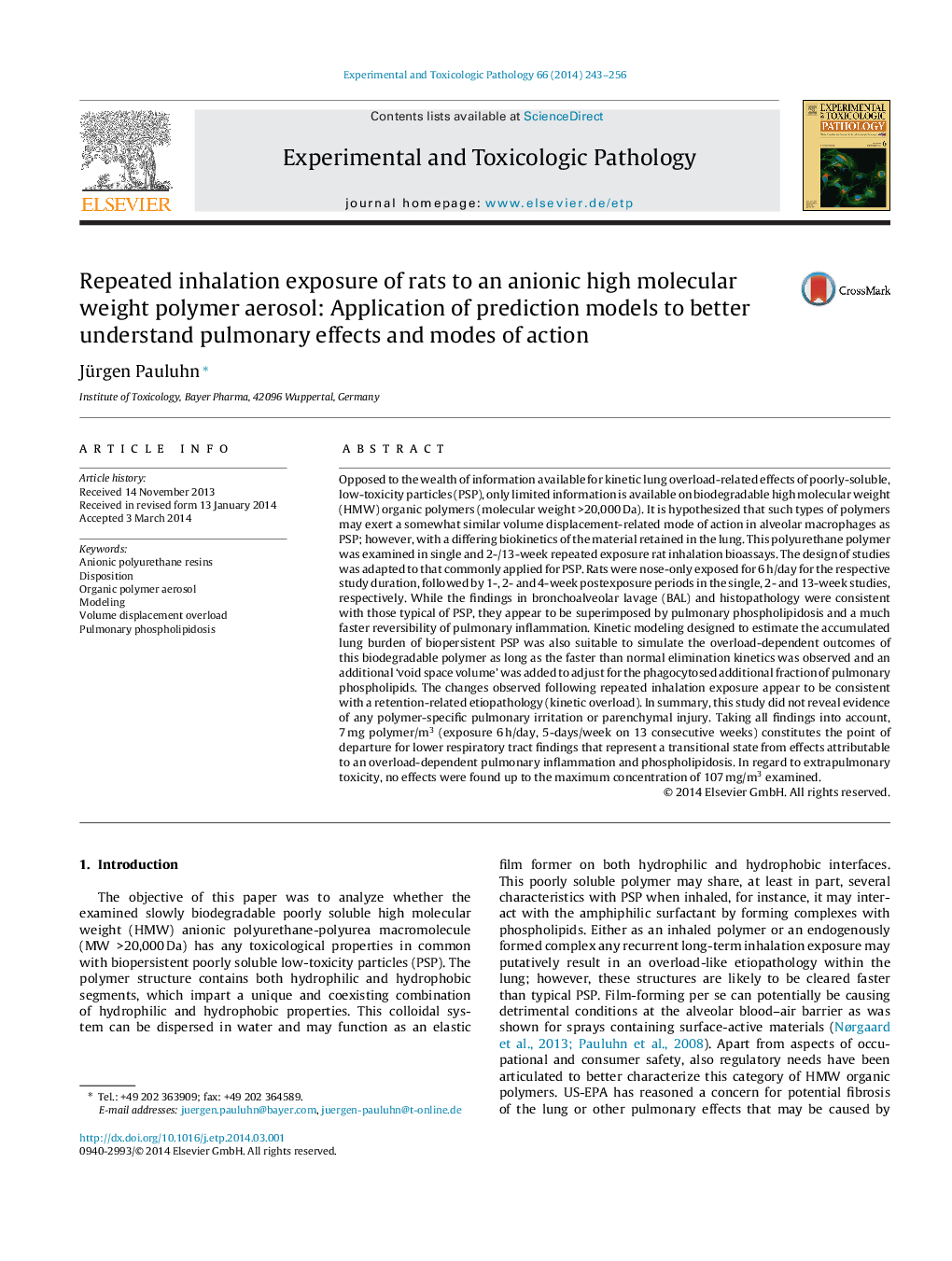| کد مقاله | کد نشریه | سال انتشار | مقاله انگلیسی | نسخه تمام متن |
|---|---|---|---|---|
| 2498831 | 1556836 | 2014 | 14 صفحه PDF | دانلود رایگان |
Opposed to the wealth of information available for kinetic lung overload-related effects of poorly-soluble, low-toxicity particles (PSP), only limited information is available on biodegradable high molecular weight (HMW) organic polymers (molecular weight >20,000 Da). It is hypothesized that such types of polymers may exert a somewhat similar volume displacement-related mode of action in alveolar macrophages as PSP; however, with a differing biokinetics of the material retained in the lung. This polyurethane polymer was examined in single and 2-/13-week repeated exposure rat inhalation bioassays. The design of studies was adapted to that commonly applied for PSP. Rats were nose-only exposed for 6 h/day for the respective study duration, followed by 1-, 2- and 4-week postexposure periods in the single, 2- and 13-week studies, respectively. While the findings in bronchoalveolar lavage (BAL) and histopathology were consistent with those typical of PSP, they appear to be superimposed by pulmonary phospholipidosis and a much faster reversibility of pulmonary inflammation. Kinetic modeling designed to estimate the accumulated lung burden of biopersistent PSP was also suitable to simulate the overload-dependent outcomes of this biodegradable polymer as long as the faster than normal elimination kinetics was observed and an additional ‘void space volume’ was added to adjust for the phagocytosed additional fraction of pulmonary phospholipids. The changes observed following repeated inhalation exposure appear to be consistent with a retention-related etiopathology (kinetic overload). In summary, this study did not reveal evidence of any polymer-specific pulmonary irritation or parenchymal injury. Taking all findings into account, 7 mg polymer/m3 (exposure 6 h/day, 5-days/week on 13 consecutive weeks) constitutes the point of departure for lower respiratory tract findings that represent a transitional state from effects attributable to an overload-dependent pulmonary inflammation and phospholipidosis. In regard to extrapulmonary toxicity, no effects were found up to the maximum concentration of 107 mg/m3 examined.
Journal: Experimental and Toxicologic Pathology - Volume 66, Issues 5–6, August 2014, Pages 243–256
